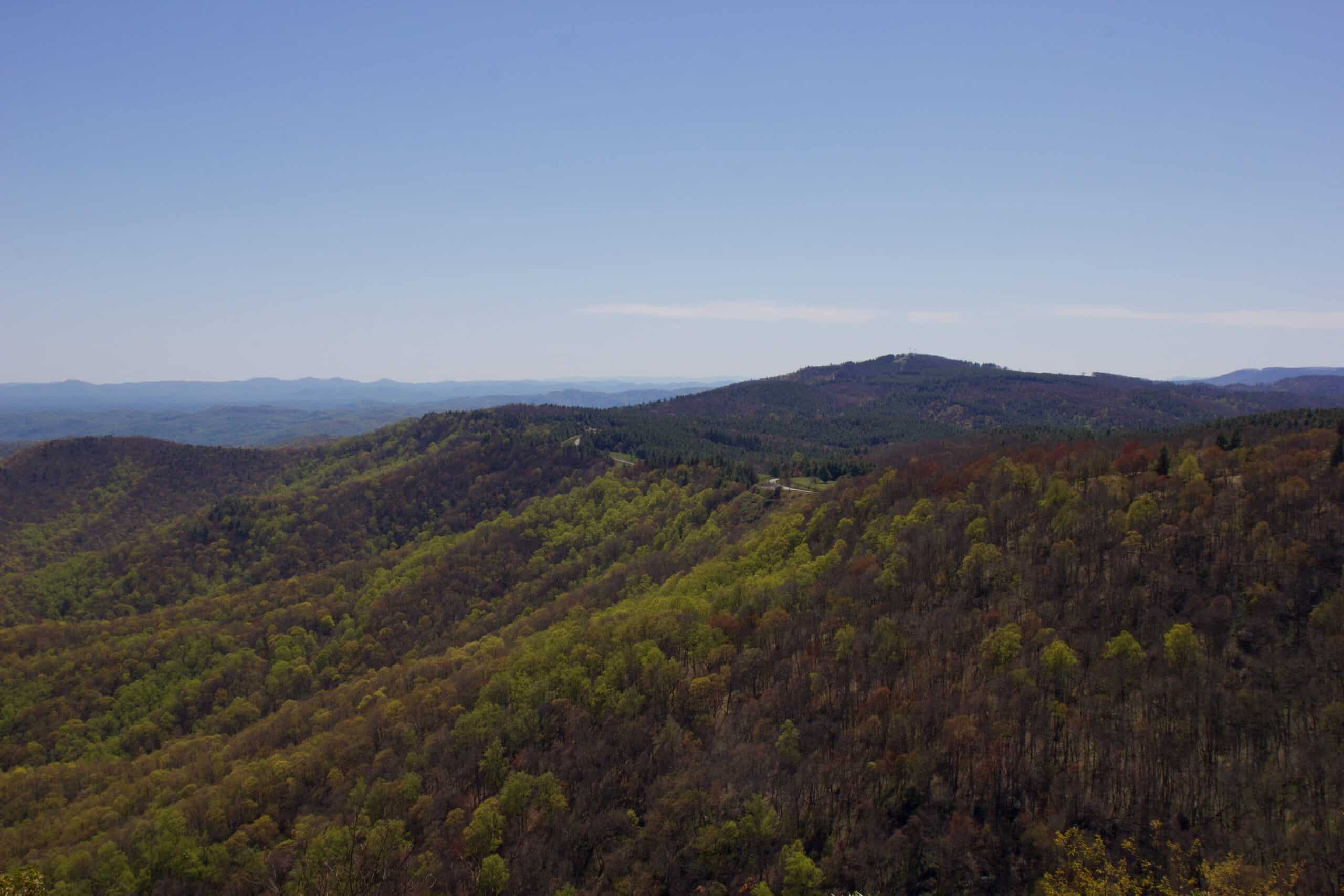The mountain laurel is a beautiful, flowering evergreen shrub native to the eastern United States. With its delicate pink or white blooms and glossy green foliage, it’s no wonder why this plant is such a popular choice for landscaping. But these beautiful plants require special care and attention to thrive in any environment.
If you’re looking for an attractive, low-maintenance shrub to add to your garden, consider growing a mountain laurel. This guide will provide all the information you need to get started: how to select and plant your mountain laurel; how to care for it properly; and how to ensure that your mountain laurel continues to flourish year after year. With just a little bit of effort, you can enjoy the beauty of this amazing plant for years to come!
So if you want an eye-catching addition to your garden that doesn’t take up too much of your time, look no further than the hardy mountain laurel! Learn how you can easily grow and care for this attractive evergreen shrub with our helpful guide. Read on for more information about selecting, planting, and caring for your mountain laurel!
Choosing Mountain Laurel Plants
Mountain laurel plants are the crown jewels of any garden. These incredible shrubs will have your garden looking like a veritable masterpiece! Choosing the right mountain laurel plants is the first step in getting your garden off to a great start.
When selecting mountain laurel, you’ll want to consider things like climate, soil type, and growing conditions. Mountain laurel can be found in many different varieties, so choose one that will thrive in your region and take into account how much sunlight it will get each day. It’s also important to make sure that the soil you use is well-draining and has plenty of organic matter added to it. You should also pick a variety that is resistant to pests and diseases, since these can easily ruin an otherwise beautiful plant.
Finally, you’ll want to think about how big your mountain laurel will get when it reaches maturity. Different varieties grow at different rates, so make sure you select one that fits within your desired area size. With the right mountain laurel selection and proper care, you can have a stunning feature in your garden for years to come!
Where To Plant Mountain Laurel
When it comes to planting mountain laurel, the location you choose will be just as important as the plant you select. Mountain laurel is a hardy evergreen shrub that requires an area with adequate sunlight and protection from strong winds. It’s best to find a spot with well-draining, acidic soil and enough room for the plant’s mature size.
Before you decide on a place to plant your mountain laurel, consider any existing plants or trees in your landscape. The roots of these plants can compete with one another for water and nutrients, so it’s important to give your new mountain laurel plenty of room to spread its roots without being crowded out. Additionally, mountain laurels are sensitive to salt buildup, so avoid planting them near sidewalks or driveways where deicing salts are likely to accumulate during winter months.
Once you’ve chosen an ideal spot for your mountain laurel, you’ll need to prepare the soil before planting. Loosen the soil by amending it with compost or other organic matter and check the pH levels to ensure they are in range that supports healthy growth (typically between 4.5 and 6). Also check for rocks or debris that could disrupt root growth when digging into the ground. With proper care and preparation, your mountain laurel should thrive in its new home for many years!
Preparing The Soil For Mountain Laurel
When it comes to planting mountain laurel, many gardeners may be surprised to learn that the success of their project relies heavily on preparation. According to recent studies, nearly 70 percent of mountain laurel plants fail due to inadequate soil preparation. With that in mind, let’s take a look at how we can best prepare our soil for mountain laurel plants.
The first step is to make sure the soil you’ll be using is nutrient-rich and well-draining. If your soil has too much clay content or if drainage is an issue, consider adding compost or peat moss for better aeration and nutrition. Additionally, it’s important to test your soil’s pH level so you can adjust accordingly. Mountain laurels prefer a slightly acidic environment with a pH level between 5 and 6.5. Fortunately, there are many products available that can help you adjust your soil’s pH balance as needed.
Last but not least, make sure the planting site offers plenty of sunlight exposure – six hours per day should suffice – as this will encourage vigorous growth over time. But don’t forget: even though mountain laurels are fairly hardy plants, they still need adequate water during the growing season; aim for about one inch per week (more during hot periods). With that taken care of, you’re now ready to move on to planting your mountain laurels!
Planting Mountain Laurel
Planting mountain laurel is an essential step in growing a thriving shrub. Contrasting from preparing the soil, this process requires more attention to detail and care. Here, we’ll discuss how to properly plant and nurture your mountain laurel for maximum growth potential.
First, you should select the right location for your mountain laurel. The spot should receive plenty of sun during the day and be able to provide some wind protection to the shrub as it matures. You’ll also want to pick a spot that has good drainage so that water doesn’t collect around the base of the plant.
Once you have chosen an ideal location, it’s time to get planting! Make sure you dig a hole twice as wide as the root ball of your mountain laurel and just slightly deeper than its current height. Place the shrub carefully in the hole, then fill in with soil until it is level with the ground surface. Firmly pat down the area around it and give it a deep watering after planting – this will encourage root growth!
To ensure your new mountain laurel thrives, mulch around its base with wood chips or shredded bark once planted. This will help keep moisture levels consistent and protect its roots from extreme temperatures during both hot summers and cold winters. With some TLC, your mountain laurel will be blooming in no time!
Watering Mountain Laurel
Watering mountain laurel is like giving a warm hug to a cherished friend. It’s an essential part of caring for this beautiful plant. Without the right amount of moisture, it will struggle to thrive and grow. Let’s take a look at how best to water mountain laurel and keep it looking its best.
When it comes to watering, less is more with mountain laurel plants. The soil should remain moist but not wet, so avoid over-watering at all costs. Water the plant deeply once or twice a week during the summer months when there is no rainfall. In winter, reduce the frequency of watering to once every two weeks or as needed depending on weather conditions in your area. Always feel the top layer of soil before adding water; if it’s damp then wait until next time!
Finally, try to water your mountain laurel early in the day so that any excess moisture can evaporate before nightfall. When you do water, be sure the entire root zone is getting soaked for optimal growth and health benefits. And remember — you want the soil moist but not soggy! With proper watering techniques, you’ll enjoy healthy mountain laurel for many years to come.
Feeding Mountain Laurel
Feeding mountain laurel is an important step in keeping your plant healthy, vibrant, and growing. To ensure your mountain laurel thrives, here’s what you need to know about feeding it:
• Fertilizing: o When to do it: Fertilize every spring when the new growth begins. o What type of fertilizer to use: Choose a slow-release fertilizer and apply according to the instructions on the package. o How much to apply: Apply the amount recommended for your plant’s size. • Mulch: o When to apply mulch: Mulch should be applied in early spring before new growth emerges. o What type of mulch to use: Use shredded hardwood or pine bark nuggets. o How much mulch to apply: Apply a 2-3 inch layer around the base of the shrub, but not right up against the trunk. • Composting: Compost can be added around your plant at any time during its growth cycle as a nutrient supplement. It helps retain moisture and has beneficial microorganisms that help keep pests away.
With proper fertilizing, mulching, and composting, your mountain laurel will become lush and beautiful with minimal effort on your part. Each of these steps helps provide essential nutrients and protection from harsh weather conditions or pests that can damage or kill your plant if left unchecked. In addition to helping your mountain laurel stay healthy, these steps will also create an attractive landscape feature that you can enjoy for years to come!
Pruning Mountain Laurel
Like a royal court of evergreen shrubs, Mountain Laurel plants can take your garden up a notch with their elegant beauty. Whether you’re gardening for the first time or already an expert in the art of landscaping, pruning your mountain laurel is a necessary step to keep them looking their best.
Pruning is best done during the late winter or early spring when the plant is not producing new growth. First, cut off any dead or diseased branches and stems. Then, remove any damaged or crossing branches that are competing for sunlight or space. Afterward, you can shape your shrub by selectively cutting back some of its longer shoots. This will give it that finished look and encourage more blooms in the summer months.
Finally, it’s important to remember that mountain laurels prefer to be lightly pruned rather than heavily sheared. Keep in mind that too much pruning can cause them to grow weaker over time. With a few careful snips here and there, you’ll have your mountain laurel looking like a show-stopper in no time! Now let’s move onto propagating and transplanting these stunning plants so they can take center stage in your garden design.
Propagating And Transplanting Mountain Laurel
Propagating and transplanting mountain laurel is an important part of growing and caring for these beautiful shrubs. With a few simple steps, you can easily increase the number of mountain laurels in your garden.
To propagate mountain laurel, start by collecting seed pods from the parent plants. Allow them to dry out, then remove the seeds and store them in a cool, dry place until you are ready to plant them. Plant the seeds in a well-draining soil mix and cover lightly with soil. You can also propagate by taking softwood cuttings from existing plants. Place the cuttings in moist sand or perlite and keep in a bright location until they develop roots.
Transplanting is also an effective way to add more mountain laurels to your garden. Be sure to dig up as much of the roots as possible when digging up young plants for transplanting elsewhere. When planting, dig deep enough so that there are no air pockets around the root ball and water thoroughly after planting. The soil should be slightly acidic (pH 5–6) for best results.
TIP: When propagating or transplanting mountain laurel, provide plenty of light but avoid direct sunlight which may scorch delicate foliage. This will help ensure healthy growth and optimal flowering potential!
Controlling Mountain Laurel Pests And Diseases
What a coincidence – it seems like just the right time to discuss controlling mountain laurel pests and diseases. As gardeners, we need to be aware of potential issues with our plants, as they can have an effect on its growth and health. Fortunately, mountain laurel is relatively easy to care for, as long as you know what symptoms to look out for and how best to address them.
We’ll start with pests. Aphids are the most common pest that affects mountain laurel, but they can be treated without too much fuss. The simplest method is to spray them off with a hose – this will remove any aphids from the plant’s surface. If that doesn’t work, insecticidal soap or horticultural oil can be used for more serious infestations.
Diseases are a bit more complicated than pests when it comes to mountain laurel, but there are still some effective treatments available. The most common problem is root rot, which can be caused by overwatering or poor drainage in the soil. To prevent this from occurring, make sure your soil has good drainage and only water when necessary. Additionally, pruning away any dead branches or leaves will help keep disease at bay by reducing fungal spores in the air around your plant.
Now that we understand how to control pests and diseases on mountain laurel plants, let’s talk about winter protection – an essential part of caring for our plants all year round!
Winter Protection For Mountain Laurel
Wintering over mountain laurel can be a challenge, but it’s worth the effort. With a few simple steps, you can help ensure that your mountain laurel plants stay healthy and beautiful through the winter months.
First, it’s important to protect your plants from extreme temperatures and harsh weather conditions. Mulching around the base of the plant helps keep roots insulated and warm, while also preventing weeds from competing for resources. In addition, applying an anti-desiccant spray helps to protect leaves from harsh winds and cold temperatures.
Finally, give your mountain laurel adequate moisture throughout the winter season. It’s best to water regularly in small amounts rather than infrequent deep watering. This will help keep soil temperatures consistent and prevent shock or damage from sudden swings in temperature or moisture levels. With these simple steps, you can ensure that your mountain laurel is well protected throughout the winter months and ready to bloom in spring!
With proper care and preparation, companion plants like azaleas and rhododendrons can provide a stunning backdrop for your mountain laurels in any setting.
Companion Plants For Mountain Laurel
Mountain laurel plants are beautiful and fragrant, making them attractive additions to any landscape. Statistics show that nearly 400 species of mountain laurel exist, including evergreen and deciduous varieties. Growing these plants can be a rewarding experience, especially when other companion plants are included in the mix.
One of the best companion plants for mountain laurel is azalea. This plant has similar soil requirements and can thrive in partial shade or full sun. Additionally, azaleas come in a variety of colors and bloom times which can enhance the beauty of mountain laurels throughout the year. Other great companion plants include rhododendrons, heaths, and heathers – all of which have similar water and light needs as mountain laurels.
When determining where to plant your mountain laurel, consider its eventual size and shape. Make sure you leave enough space for it to grow without overcrowding other nearby plants or shrubs. Adding mulch around the base of the plant can help protect its roots from extreme temperatures while also providing essential nutrients over time as it breaks down into the soil.
TIP: When choosing companion plants for mountain laurel, always consider their water and light requirements in relation to your particular climate or growing zone so you select compatible varieties that will thrive together in harmony!
Enhancing Mountain Laurel’s Landscape Interest
Enhancing a mountain laurel’s landscape interest can be done in a variety of ways. In order to make the most of this beautiful shrub, it’s important to know what companions will provide the best environment and complement its unique features. By understanding how light and soil can affect the growth of mountain laurel, as well as what other plants will bring out its beauty, gardeners can ensure their laurel has maximum impact in their outdoor space.
Mountain laurels thrive in partial sun or full shade, making them ideal for areas that receive a few hours of direct sunlight each day. They also require moist soil with good drainage. To keep the soil around your mountain laurel healthy, consider adding some organic material like compost or mulch to improve drainage and water retention.
When choosing companion plants for mountain laurel, pick species that have similar needs in terms of light and moisture. This will help ensure that all the plants get enough water and nutrients in order to flourish together. Consider adding perennials like azaleas or rhododendrons, annuals like impatiens or begonias, ground covers like creeping phlox or vinca minor, or evergreens such as boxwoods or hollies for some added color and texture to your garden bed. With careful selection and attention to growing conditions, you can create an oasis with your mountain laurels as the centerpiece!
Creating an eye-catching display with mountain laurels is easy when you choose companion plants that bring out its best features while meeting its growing requirements. A combination of different varieties and shapes is sure to attract attention and contribute to a stunning garden design.
Popular Varieties Of Mountain Laurel
The beauty of mountain laurel is boundless, and the popular varieties of this shrub are a testament to that. With its showy blooms and evergreen foliage, it’s easy to see why this plant is so popular. From the full-sized ‘Carol’ to the dwarf-sized ‘Minuet’, there’s something for everyone in this diverse group of plants.
For those seeking a reliable landscape interest enhancer, look no further than mountain laurel. Varieties like ‘Elsie Lee’ are renowned for their brilliant display of white flowers, while others like ‘Shades of Pink’ boast unique flower colors that range from deep pink to magenta. The evergreen foliage also adds an element of texture and depth to your garden design.
No matter which variety you choose, you can rest assured that your mountain laurel will provide endless visual appeal year round. With proper care and maintenance, these plants won’t disappoint! With their showy blooms and lush foliage, they’re sure to be a standout feature in any garden or landscape design. Now let’s explore how you can use mountain laurel in your own garden designs!
Popular Uses For Mountain Laurel
The incredibly versatile mountain laurel plant has a plethora of uses, many of which may surprise you. You’d think that this beautiful ornamental shrub is only good for decorating your garden – but it’s so much more! Who knew that such a delicate looking thing could be so valuable? Here are just a few of the popular uses for mountain laurel:
Crafts: From creating wreaths and centerpieces to making jewelry, the small leaves and petals of the mountain laurel can be used in all sorts of creative ways.
Soapmaking: Mountain laurel essential oil is often used as an ingredient in handmade soap. Its floral scent gives the soap a unique aroma and makes it perfect for special occasions.
Natural Insect Repellent: The essential oils from the mountain laurel plant can help to keep pesky bugs away without using harsh chemicals.
Though these are some of its most common uses, there are many other possibilities for this charming shrub. It can also be used as decoration in flower arrangements or even dried to make potpourri. With its versatility and beauty, it’s no wonder why people have embraced mountain laurels into their lives! Now let’s look at troubleshooting any issues you may have with your mountain laurels…
Troubleshooting Mountain Laurel Issues
Tackling troubles with your mountain laurel doesn’t have to be a trial. Taking the time to tend to any problems that arise can help you reap the rewards of having a healthy, vibrant plant. From pest prevention to pruning processes, there are plenty of techniques you can use to keep your mountain laurel looking great.
Pest problems are especially common in mountain laurels, so it’s important to inspect your shrub regularly for signs of insect damage. To prevent pests from taking over, use insecticidal sprays or horticultural oils as needed. If your plant has already been infested, prune away any infected branches and discard them immediately. Additionally, you may want to rake away any fallen leaves and twigs that could harbor insects.
Finally, it’s essential to trim your mountain laurel properly in order to keep it looking its best. Prune off dead or diseased branches as needed and shape the shrub by cutting away excess growth. Make sure not to over-prune the plant though; too much trimming can cause stunted growth or even death of the shrub. With regular maintenance and attention, you’ll be able to enjoy a beautiful mountain laurel for years to come!
Frequently Asked Questions
What Is The Best Time Of Year To Plant Mountain Laurel?
Planting a Mountain laurel is like embarking on a journey – one that requires patience and dedication. Setting out with the right foundation is key to ensuring success along the way. Knowing when to plant your Mountain laurel is essential for creating a thriving landscape.
It’s best to plant your Mountain laurel in early spring or late fall, when the soil is moist and not too hot. Planting during these times ensures optimal growth and helps the shrub establish strong roots before any freezing temperatures. To get started, here are three steps to make sure you’re setting yourself up for success:
First, prepare the soil by turning it over and adding an organic fertilizer or composted manure. This will ensure your shrub has the nutrition it needs for healthy growth. Second, dig a hole twice as wide as the root ball of your Mountain laurel and just as deep. Finally, water thoroughly after planting and keep it watered until established.
The rewards of planting a Mountain laurel are plentiful; its brilliant evergreen foliage creates year-round interest in your garden while colorful flowers in shades of white, pink, or purple add beauty from spring to summer. With proper care, you can enjoy this hardy shrub for years to come!
How Far Apart Should Mountain Laurel Plants Be Spaced?
Planting mountain laurel is an exciting way to add vibrancy and beauty to a garden. When considering how far apart these plants should be spaced, there are a few factors that need to be taken into account. To get the most out of this nature-friendly activity, it’s important to understand the basics of this flower’s growth habits.
When it comes to spacing mountain laurel plants, it’s best to think big from the start. As the saying goes, ‘Measure twice and cut once’. This adage is especially true in this case as mountain laurels can grow up to 12 feet tall with a spread of 8 feet. It’s recommended that you space them at least 5–6 feet apart so they’ll have enough room for healthy growth and development.
The type of soil your mountain laurels will be planted in will also determine how far apart they should be spaced. If your soil is loose and sandy, then you may want to space them out further than if your soil was thick and clay-like. Additionally, if you’re planting multiple varieties of mountain laurel together or in close proximity, then you should make sure there is enough distance between each variety for adequate airflow and light penetration.
With proper spacing and care, your mountain laurel will have plenty of room to thrive. With some patience and knowledge about their needs, you can create a beautiful landscape that will add color and texture to any outdoor area for years to come.
What Type Of Fertilizer Should I Use For Mountain Laurel?
When it comes to caring for mountain laurel, fertilizer can be a great way to encourage healthy growth. But with so many different types out there, it can be hard to know which one is best. In this article, we’ll look at what kind of fertilizer you should use for your mountain laurel plants.
A slow-release fertilizer like an organic mix can help provide your mountain laurel with the nutrients it needs without shocking the plant. This type of fertilizer is especially beneficial during the growing season when your plant needs an extra boost of nutrition. Additionally, slow-release fertilizers last longer and so you won’t have to worry about reapplying them as often.
If you want to give your mountain laurel some extra nutrition during the summer months, then a liquid or granular fertilizer may be a better option for you. These types of fertilizers are quickly absorbed by the soil and provide quick results for your plants. However, they don’t last as long as slow-release fertilizers do and therefore will require more frequent applications throughout the year.
No matter what type of fertilizer you decide to use, make sure that it has an NPK ratio (nitrogen, phosphorus, and potassium) that’s suitable for acid-loving plants such as mountain laurels. The right kind of fertilizer will ensure that your plants grow strong and healthy all year round!
How Often Should I Prune Mountain Laurel?
Pruning your mountain laurel correctly is key to keeping it healthy and vibrant. With pruning, you can shape the shrub to your liking as well as keep it from getting overgrown. But how often should you prune your mountain laurel?
The answer is more straightforward than you might think. Mountain laurels should be pruned annually, in late winter or early spring. This provides the shrub with an opportunity to put out new growth and become fuller. It’s best to wait until after the shrub has flowered so that you don’t remove any of its beautiful blooms! If your plant is severely overgrown, it may need to be pruned back more frequently.
When pruning your mountain laurel, make sure to remove any dead or diseased branches first. Then begin shaping the shrub by cutting back any overly long stems and removing any crossed branches. This will help keep air circulating through the foliage and encourage healthy growth. Always use sharp, sterilized shears for a clean cut and don’t forget to wear gloves when handling the plant! With a bit of regular maintenance, your mountain laurel will reward you with years of beauty and charm.
Will Mountain Laurel Survive In Cold Climates?
Mountain laurel is an attractive and hardy shrub that can survive in a variety of climates. Will mountain laurel survive in cold climates? Yes, it can! Mountain laurel is native to the eastern United States and thrives in USDA Hardiness Zones 6-9. It prefers partial sun to full shade and well-drained soil with acidic pH levels. To ensure optimal growth, here are five tips for growing mountain laurel in cold climates:
- Plant your mountain laurel in a sheltered area, such as near a building or fence, to protect it from harsh winter winds.
- Provide your plant with enough water during the summer months as this will help it thrive during the winter season.
- During the winter months, apply fertilizer sparingly as too much could cause damage to the foliage and roots.
- Mulch around the base of your plant to insulate it from extreme temperature changes.
- Prune any dead or diseased branches regularly to maintain healthy growth.
These tips will help keep your mountain laurel looking its best even through colder temperatures! With proper care and maintenance, you can enjoy this beautiful shrub all year round in colder climates – just make sure you’re prepared for some extra attention during those frigid days! Mountain laurels are tough plants that can stand up to most conditions if they’re properly cared for – so go ahead and give them a try!
Conclusion
The mountain laurel is truly a thing of beauty. With its lush green leaves and delicate white flowers, it is sure to add a touch of elegance to any garden. But not only does it look beautiful, it is also hardy and requires minimal care. Planting at the right time, spacing properly, using the right fertilizer, and pruning regularly will ensure that your mountain laurel will thrive for years to come. Even in cold climates, this resilient plant can survive with proper care and maintenance.
The beauty of the mountain laurel is so astounding that you would swear it had been blessed by the gods themselves! Its graceful form creates an aura of serenity which can be enjoyed all year round. With its blossoms in full bloom during springtime, you won’t be able to help but gaze upon its majestic beauty in awe. The delicate petals are so white they appear almost luminescent under the sunlight’s glare.
Growing and caring for a mountain laurel may seem like a daunting task but with a little effort you can create an oasis of tranquility in your own backyard. Once planted, its natural gracefulness will captivate you with its sheer magnificence. You will be enchanted by its stunning beauty for many years to come!





























